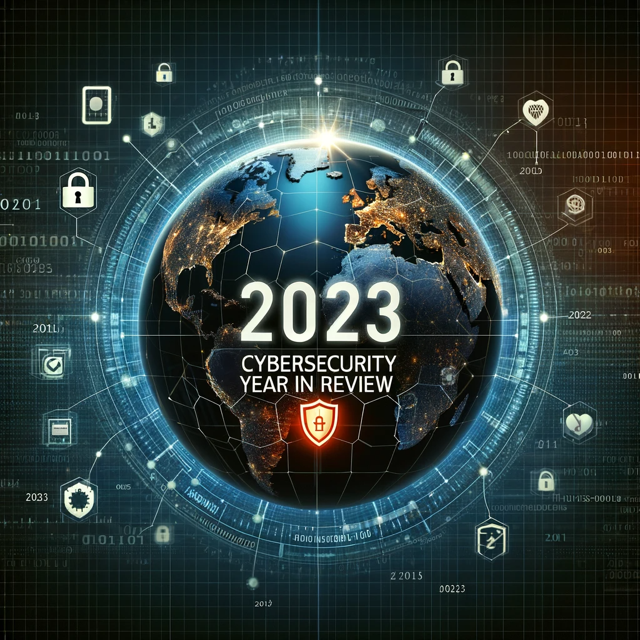Cybersecurity Year in Review 2023: Key Events, Learnings, and Takeaways
As 2023 comes to a close, it’s essential to look back at the major cybersecurity events of the year and extract crucial learnings and takeaways. This year has been marked by significant incidents that have reshaped our understanding of digital security, privacy, and cyber resilience.
Major Cybersecurity Incidents of 2023
Some statistics for reference:
Number of incidents in 2023: 1,404*
Number of breached records in 2023: 5,951,612,884*
(*) as of this writing.
- Global Ransomware Surge
The year saw a dramatic increase in ransomware attacks targeting both private and public sector organisations. Notable among them was the attack on MGM Resorts, which resulted in substantial financial losses and highlighted the need for better ransomware preparedness and response strategies.
- Data Breaches and Privacy Concerns
Numerous data breaches occurred, exposing the personal information of millions. The 23andMe breach was particularly alarming due to the sensitivity of the data involved. This event underscored the ongoing challenges in protecting personal information in the digital age.
- State-Sponsored Cyber Attacks
Geopolitical tensions led to an uptick in state-sponsored cyber activities. Kyivstar, Ukraine’s largest mobile network operator, suffered a cyber-attack, one of the highest-impact disruptive cyber-attacks on Ukrainian networks since the start of Russia’s full-scale invasion. The cyber-attack also reportedly disrupted air raid sirens, some banks, ATMs, and point-of-sale terminals. signalling a new era of digital warfare.
- AI and Deepfake Misuse
The misuse of AI technologies, especially deepfakes, posed new threats. The somewhat ease of deepfake use as a social engineering tool raises concerns about the potential use of AI for misinformation and manipulation, especially coming into the US Presidential Elections in 2024.
Learnings and Takeaways
Enhancing Cyber Resilience
The events of 2023 have shown that cyber resilience is not just about preventing attacks but also about having robust recovery and response plans. Organizations need to invest in both preventive measures and recovery strategies.
The Importance of Cyber Hygiene
Basic cyber hygiene practices, like regular software updates, strong passwords, and multi-factor authentication, remain vital. Many of the year’s breaches could have been mitigated or avoided with better hygiene practices.
Need for Greater Collaboration
Cybersecurity is no longer a solitary endeavour. The year highlighted the importance of collaboration between private companies, government agencies, and international bodies to combat cyber threats effectively.
AI and Cybersecurity
With the rise of AI-powered threats, there’s an urgent need for AI-centric security solutions. Organizations must understand and prepare for the unique challenges posed by AI in the cybersecurity domain.
Privacy and Data Protection Laws
The data breaches of 2023 have prompted calls for stronger privacy and data protection laws. There is a growing need for legislation that keeps pace with the evolving digital landscape.
Focusing on Human Factors
Human error continues to be a significant factor in cybersecurity incidents. Training and awareness programs are crucial in mitigating this risk.
Looking Ahead
As we move into 2024, the lessons learned in 2023 will undoubtedly shape our approach to cybersecurity. The key is to adapt and evolve continuously in the face of emerging threats and challenges. Building a cyber-resilient future requires vigilance, innovation, and collective effort.


